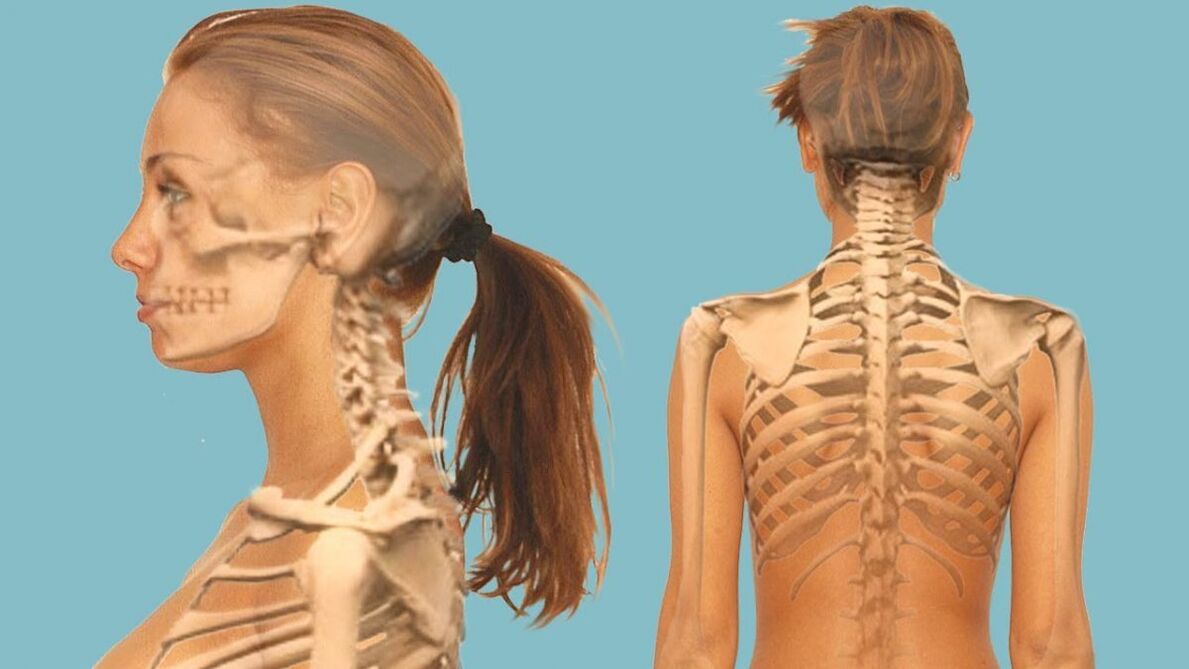Cervical osteochondrosis - The degeneration process of intervertebral discs, bone tissue, joints and ligaments.They emerge from injuries, a sedentary lifestyle, sleeping in uncomfortable positions.They cause headaches, dizziness, neck and shoulder pain, and impaired cardiovascular and respiratory system work.
The disease is diagnosed using radiograph, CT or MRI.More and more, under 25 years old are found.It is treated with medications, physical therapy, massage and exercise.
Development mechanism
Cervical osteochondral disease is caused by long-term invasion of the anti-pressure plate.They are exhausted: they become less resilient and less highly.As a result, the load on the spine increases, the vertebrae is possible, and their trauma during movement is possible.This leads to the formation of bone plants (bone growth) in areas of damaged vertebrae.

If osteocartilage is not treated at this developmental stage, cracks appear in the fibrous annulus around the disc core.This in turn leads to the formation of protrusions (nucleus shifts to the side).
Over time, vertebral hernia appears: the annulus of the disc is disconnected and its core is protruding.
The cervical area is the most mobile and fragile.Its intervertebral disc is smaller than the area of the chest and waist.Therefore, it is more susceptible to destruction: 55% of spinal cord lesions belong to the share of cervical osteochondral osteomyelitis.In industrialized countries, the indicator reaches 60-80%.
reason
Possible causes of the development of cervical osteochondrosis include:
- Genetic tendency.
- Neck injury (accident, exercise or delivery).
- Vascular pathology.
- Lack of cartilage function.
- The load on the cervical area is incorrect.
- A failure in the work of the immune system.
- age-related changes.
- Abnormal spinal development.
- Hypoemia.
Factors that cause this disease:
- The dream position is wrong, on a tall, too big or soft pillow.It causes deformity of the cervical spine, damage to the vertebrae of the vertebrae, and blood flow: the function of the intervertebral disc is deteriorated.
- Living in one location for a long time: sitting at a desk at work, at a desk at a college, school or home, driving a car or computer, bringing a cell phone or tablet, and lying in bed.All of this leads to excessive construction of the cervical muscles, arterial clamping, violating the intake of the disc.
- Improper nutrition.Sugar, salt, butter pastries, spicy and fatty dishes - deteriorates the state of blood vessels, intervertebral discs, and stimulates the destruction of spinal bones and cartilage tissue.If insufficient vitamins and minerals enter the body at the same time, the possibility of osteochondrosis increases.
- Habits of sitting on hands on table.The causes of spinal deformation increase the load on the cervical area, deterioration of metabolism in bone tissue, and deterioration of intervertebral discs.
- Alcohol abuse, tobacco - causes vasospasm, disease in the work of all organs and systems.
Cervical osteochondrosis is most often suffering from tailors, office and bank workers, as well as drivers.The risk group also includes school children and students.
Characteristics of performance
Pinch the spinal cord and blood vessels that supply blood and oxygen to the back of the brain with pinched with cervical osteochondrosis.Therefore, it is characterized by symptoms of neurological and circulatory diseases:
- The muscle pain in the neck and shoulders, their cramps.
- Numbness in the cervical area, hands.
- Headache.
- Fuzzy action.
- Dizziness.
- Cardiac dysfunction, respiratory organs, vestibular equipment.
- Focusing on concentration, worsening of vision and hearing.
- Difficulty in memory of information.
Cervical osteochondrosis can lead to stroke, which is the real pathology of internal organs.In severe cases, there is a possibility: disability, death.To improve your prognosis, you need to treat the disease promptly.
Treatment method
Treatment of osteochondrosis in the cervical area:
- Drugs: Means to relieve muscle cramps, pain and inflammation and restore cartilage tissue.
- Massage in the cervical and chest area.
- Physical Therapy Sports - Exercise the muscles of the neck and shoulders and stretch the cervical spine.
- Electrophoresis, laser therapy, acupuncture, other physical therapy procedures.
- diet.
- Manual therapy.
In addition, wear the collar of the boat ring and use a Kuznetsov applicator.
Q&A
Can children have cervical osteochondrosis?
It happens not only in adults, but in teenagers, earlier children.Possible causes: Sitting at the desk, computer, keeping a curved position, sitting in the hands of a mobile phone or tablet, ignoring the wrong position of physical education.
If cervical osteochondrosis is diagnosed, are the military exemptions exempted?
In the presence of obvious symptoms, spinal destruction, motor disorders, large vertebrae hernia, and the continuous inefficiency of the inefficiency of the radiological signs of inefficiency of the enrollment therapy, they can be released in the military.In addition, he must be registered with a neurologist.
Can I have osteochondrosis exercise?
This must be discussed with a neurologist or vertebral doctor: it all depends on the stage of the disease and the type of exercise.With moderate loads, swimming will be useful.However, professional sports, especially with the complex process of osteochondrosis, can be impaired.
How to reduce the risk of cervical osteochondrosis?
- Remove your neck and shoulders regularly.
- Sleep on a mattress and a pillow with medium stiffness.
- Please keep your back and neck accurately during your stay while walking.
- Eat foods rich in vitamins.
- Recharge every 2 hours while sitting.
- Move more.
- Quit smoking.
- Limit alcohol use.
in conclusion
- Adults and adolescents and children are prone to cervical osteochondrosis.
- Spine injury, deficiency of vitamins and microelements, sleeping in the wrong position or in a soft bed, sitting in a long position, and a curved neck can cause the development of spinal pathology.
- The emergence of head and muscle pain, respiratory, cardiovascular dysfunction, hearing impairment and vision may indicate cervical osteochondral disease.
- It is necessary to treat the disease in full.
- It is necessary to use medications, exercise, massage and physiotherapy classes, and adjust your diet.

























